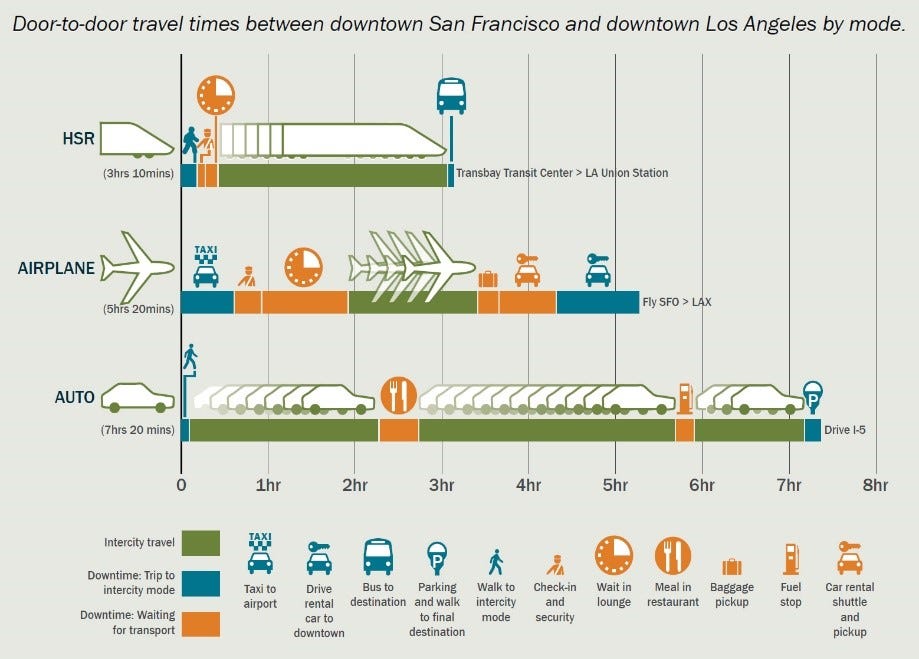When is High-Speed Rail Superior to Cars and Planes?
Turns out not always, but almost!
A question I hear a lot is: “Why invest billions of dollars in High-Speed Rail (HSR) when we already have good roads and airports?”
I think it’s a fair question.
Sure, the environmental gains are unmatched compared to planes and even by electric cars (read HERE why electric cars are not as green as you think).
However, not all of us are tree-hugging environmentalists.
Most of us care more about speed and convenience!
It can seem counterintuitive that HSR is more convenient than a car, that takes you directly from your home to wherever you want to go; or faster than planes that has an average speed of 800km/h.
Well, for cars the answer is easy: Traffic Jams and red lights!
These two factors alone are enough to offset any speed and convenience gains from the car. In fact, crossings with red lights make cars so inefficient that regular bicycles easily overtake cars in urban areas.
For planes it is a bit less straightforward.
Many people tend to count travelling by plane as the time it takes for it to go from one airport to another. By that measure, travelling by plane is indeed the fastest option in most cases.
However, to get a real time estimate of a plane journey, we must factor in the time it takes to travel to-and-from airports, go through the rigorous security checks plus the tedious wait of checking in-and-out your luggage. With these factors included, travelling by plane is slower in almost all cases where HSR is an option.
The image below is the estimated door-to-door travel times between downtown San Francisco to downtown Los Angeles with the the California HSR (under construction), an airplane and a car:
As you can see, even when a transit bus is factored in to get to the train stations, the HSR trip is 2hrs and 10 minutes faster than taking a plane, and a whopping 4hrs and 10 minutes faster than taking a car!
The crazy thing about this is that the distance between San Francisco and Los Angeles of 616km is not even a particularly optimal distance for HSR.
Below is a graph showing at what distances HSR is the most optimal compared to highways and planes. The graph is based on millions of trips from the country with the most tracks of HSR in the world, China.
The horizontal axis show the distance to the destination and the vertical axis show the time needed to complete the journey.
As you can see, HSR is always the fastest mode of transportation between 200-1000 km. And in the golden zone of 300-400 km, HSR is vastly superior!
That means that the travelling time on trips from cities like London to Paris (344km) or New York to Washington (364km) could be cut by as much as 70% by taking an HSR instead of driving or flying!
So, for any trip below 1000km in distance, HSR is superior in almost every sense for consumers. On top of that, this graph doesn’t even factor in the added space and privacy HSR has to planes, and the added benefit of not having to drive for 4+hours if you take the car.
All in all, HSR is a very expensive investment as it is a complex technology that requires dedicated infrastructure, but when seeing how superior it is compared to planes or cars, plus that it is literary the only way we have to go carbon neutral in land-transportation, it is a very sound investment.
Concluding Words
Of course, people have subjective preference for air travel or cars which can make those modes of transport feel better for them.
What I’m saying is, on distances between 200-1000km, based on objective factors such as time to destination, price of the trip, space and privacy, convenience, avoiding congestion and environmental impact, HSR wins hands down!



